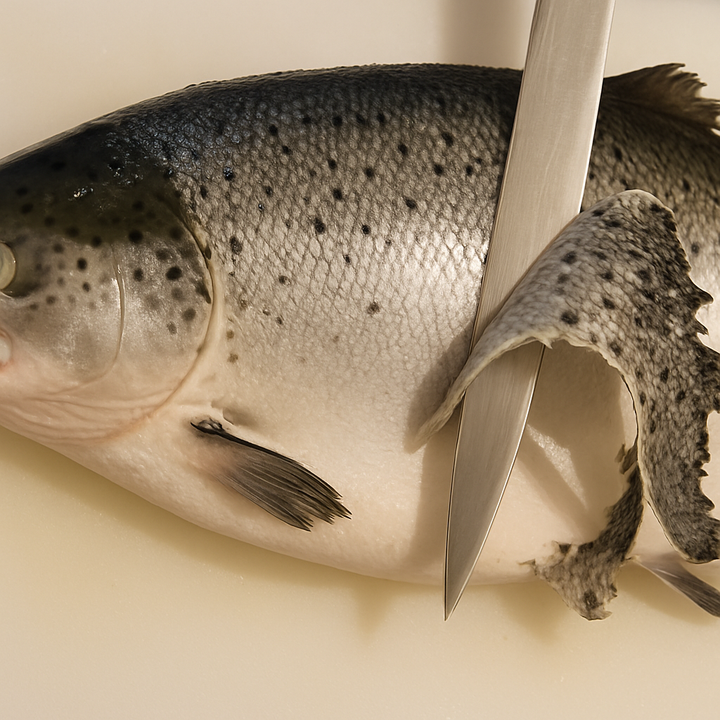The Edible Burgundy Snails: Escargot de Bourgogne
Burgundy snails, or "escargots de Bourgogne," are a festive delicacy often served in portions of six or twelve. This article uncovers their rich history and traditional recipe.

What is a Burgundy Snail?
The Burgundy snail, scientifically known as Helix pomatia, is one of the most iconic species of edible land snails.
This snail is renowned for its culinary significance, particularly in French cuisine, where it is commonly referred to as "escargot de Bourgogne."
Native to Europe, the Burgundy snail has been prized for centuries for its tender flesh and delicate flavor, making it a cornerstone of classic dishes in gastronomy.
Characteristics of the Burgundy Snail
Physical Description
- Size: Burgundy snails are relatively large, with adult shells typically measuring between 30 and 50 millimeters in diameter.
- Shell: The shell is spiral-shaped and has a pale cream to light brown coloration with subtle banding, providing camouflage in its natural environment.
- Flesh: The snail’s flesh is tender yet meaty, with a mild, earthy flavor that readily absorbs the herbs and seasonings it is cooked with.
Habitat
- Burgundy snails thrive in temperate climates and are most commonly found in woodlands, vineyards, and meadows with calcareous soil. They require environments with sufficient moisture to prevent desiccation, making regions with regular rainfall ideal for their survival.
Diet
- Burgundy snails are herbivorous and primarily feed on a diet of leaves, flowers, and decaying plant matter. Their diet contributes to their unique taste profile, which is influenced by the terroir of their habitat.
Farming and Sourcing of Burgundy Snails
In a spacious, minimally furnished room at a food processing plant in Migennes, nestled in the Burgundy region of France, meticulous efforts are made to prepare large snails for packaging.
The process involves reintegrating the cooked snail flesh into carefully selected, matching shells. On average, thousands of snails are assembled each hour.
Once reconstituted, these savory creations are shipped to grocery stores and restaurants, primarily serving the northeastern regions of France.
Known as "escargots de Bourgogne," these buttery and garlicky Burgundy snails are a quintessential French delicacy.
While these shelled treats are closely associated with the Burgundy region, most of the snails used in their preparation are sourced from other European nations.
A Historical Perspective on Snail Consumption
Snail consumption has deep historical roots, dating back to the Romans and Gauls, who grilled or fried snails as a nutritious food source, especially during times of scarcity.
Recognizing their value as a protein-rich delicacy, the Romans pioneered heliciculture—the practice of snail farming—around 50 BC.
These farms featured enclosures fortified with ash or sawdust-filled ditches to prevent escapes, a testament to the snails' surprising determination. This tradition continued in France until the early 20th century.
The iconic Burgundy snail dish, escargots à la bourguignonne, emerged from a historic moment of diplomacy.
In 1814, after Napoleon’s defeat, French Minister Talleyrand sought to ease tensions between Emperor Alexander I of Russia and King Louis XVIII.
His chef crafted a dish of snails stuffed with butter, garlic, and parsley, which delighted the Emperor and smoothed political discord.
By the early 19th century, Burgundy snails became a sought-after gourmet treat, particularly in Paris, solidifying their place in culinary history.
The Burgundy Snail: A Highly Protected Dual Identity
The Burgundy snail, scientifically known as Helix pomatia, is also referred to as the "Roman snail" or the "Vineyard snail," a nod to Burgundy’s rich wine culture.
While this species is the most popular for culinary use, it is predominantly imported, as French breeders generally favor the Cornu aspersum.
Furthermore, the Burgundy snail is a protected species in France, with strict regulations forbidding its collection during reproductive periods.
Decline of France’s Wild Snail Populations
Once abundant in Burgundy, wild snail populations have drastically decreased over the past century.
Overharvesting in the early 1900s, coupled with habitat destruction due to agriculture, roads, and railways, contributed to their decline.
A 1979 law sought to protect snails by limiting the commercial collection of wild species. These restrictions, combined with rising demand, have led to increased reliance on imports from Central Europe.
Modern-Day Demand and Challenges
The Burgundy snail remains beloved by consumers for its delectable taste and potential escargot's health benefit.
However, French snail farmers are advocating for greater transparency regarding the origin of snails sold in France.
They argue that labeling should disclose whether snails are locally sourced or imported, tapping into the growing interest in local production and consumption.
Current laws do not mandate such disclosures, leaving consumers unaware of the true origins of their escargots.
How to Prepare and Enjoy Escargots de Bourgogne
To create this iconic dish, begin by making a traditional "beurre d’escargots," a mixture of butter, garlic, and parsley.
This flavorful butter is then stuffed into empty snail shells alongside the cooked snails.
The prepared shells are baked until the butter is sizzling and aromatic. Serve the snails immediately while the butter is bubbling hot.
For an authentic snail dining etiquette experience, use snail tongs to hold the shell and a snail fork to extract the succulent meat.
Pair this delicacy with a glass of white wine, such as a crisp Chablis, to enhance the flavors of the dish.
With its rich history, unique preparation, and delightful taste, escargots de Bourgogne continues to captivate food lovers worldwide.


